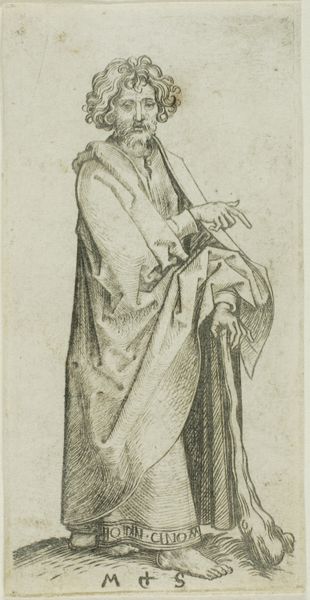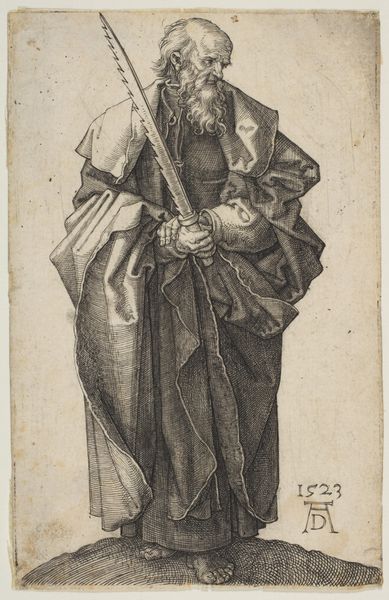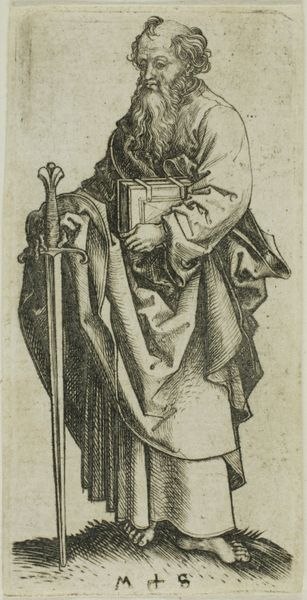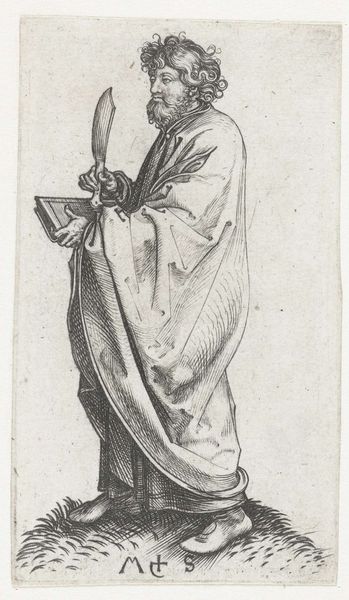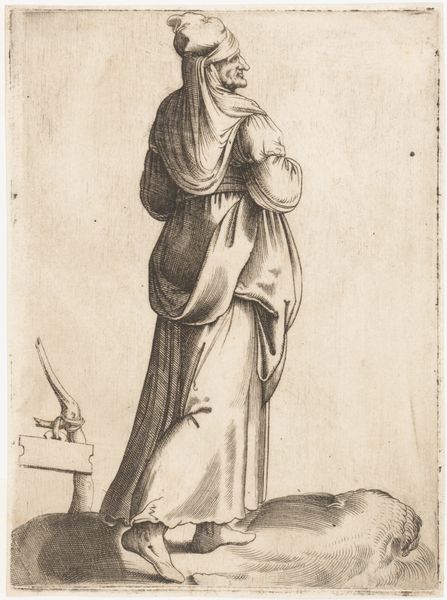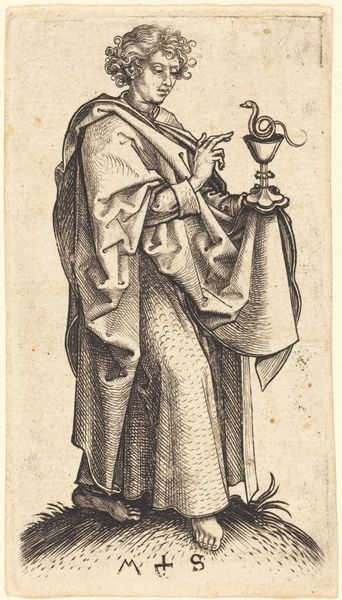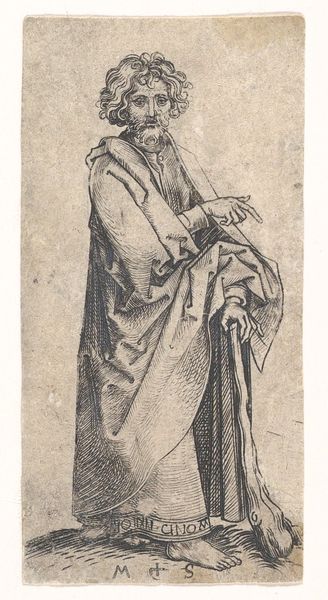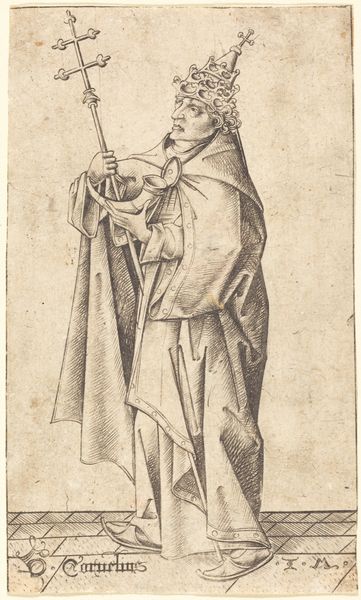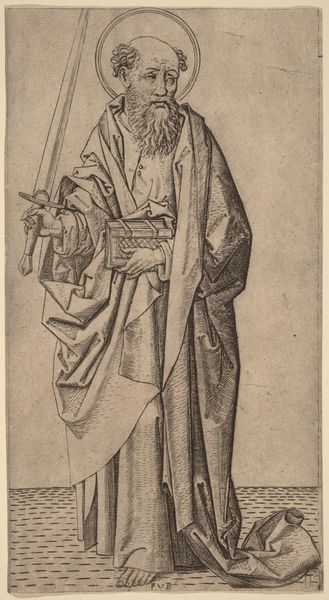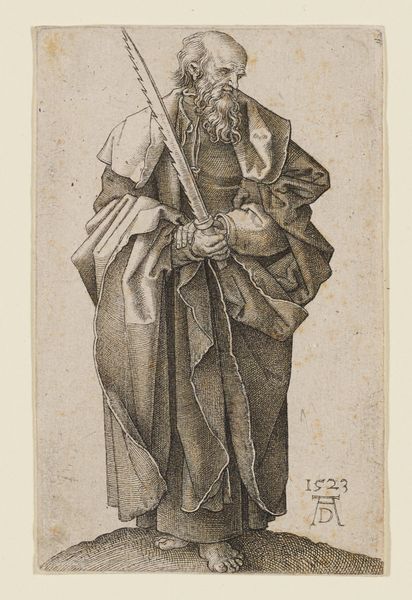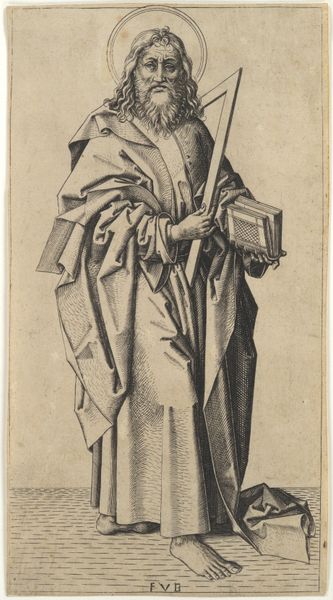
drawing, print, paper, engraving
#
portrait
#
drawing
#
medieval
# print
#
figuration
#
paper
#
11_renaissance
#
history-painting
#
engraving
Dimensions: 89 × 43 mm (plate); 90 × 46 mm (sheet)
Copyright: Public Domain
Curator: Here we have Martin Schongauer’s engraving, “St. James Major, from Apostles.” Editor: He looks…weathered. The lines are incredibly detailed, really capturing the texture of his beard and the folds of his garments. There's a quiet solemnity to his stance. Curator: It's intriguing how Schongauer, in an era steeped in religious patronage, still had to contend with the printmaking process as a commercial enterprise. Prints like these were produced in multiples and sold, making art accessible to a wider audience. Editor: The material realities are paramount. Notice the varying line weights used throughout the engraving. Thicker lines define the contours, providing structure, while finer lines create shading, building depth. The hatching technique gives volume to his robes. Curator: It speaks to the social impact of the print. Suddenly religious iconography is more available. I imagine people of varying socioeconomic backgrounds were able to contemplate this Apostle James, not just the wealthy who commissioned paintings. Editor: The composition itself is carefully structured. The figure is elongated, yet his presence is grounded by the staff he holds and his bare feet resting on what seems like a small patch of grass. This vertically balanced arrangement contributes to his imposing aura. Curator: This access also challenges the perceived preciousness of artworks. An engraving, while detailed, loses the unique aura that, say, a single panel painting holds. Does widespread production diminish its artistic value? Editor: That's an interesting debate, but I disagree with that value determination. Focus on Schongauer's formal language here; look at the symbolic meaning conveyed through visual cues, the use of light and shadow to communicate piety and wisdom. These design decisions resonate independent of the item's material value or commercial history. Curator: Fair enough. Considering this historical context, this isn't just about lines on paper. It is a glimpse into a changing societal landscape where access to imagery shifted. Editor: Absolutely, and appreciating how line and composition are masterfully integrated opens us up to his craft.
Comments
No comments
Be the first to comment and join the conversation on the ultimate creative platform.

